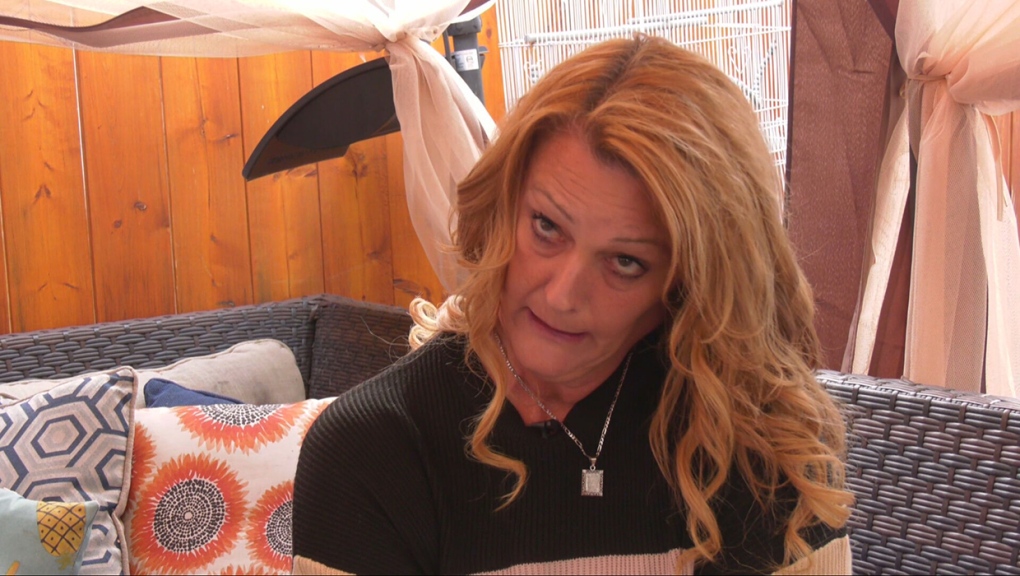'The hardest thing is to find a diagnosis': Calgary woman speaks out about neurological condition
A Calgary woman is spreading the word about an often misdiagnosed ailment, because of her own struggles with the neurological condition.
Dystonia affects an estimated 50,000 people in Canada with 60 per cent suffering from cervical dystonia which affects the head and neck and is often mistaken for a stiff neck or arthritis.
“The hardest thing is to find a diagnosis for cervical dystonia,” said Astrid Frauscher.
She was diagnosed in 2015 after experiencing continuous pain and difficulty holding up her head.
“My first doctor told me I needed to exercise and lose weight and it was just a sore neck, I woke up wrong and it would go away. “
It didn’t go away. It actually got worse.
Within two weeks, her neck was bent over with her head on her left shoulder.
“It was stuck," she said.
Any age
Dr. Davide Martino, a leading neurologist and professor at the University of Calgary, says the condition can appear at any age and present in different ways.
“I want people to understand dystonia is not uncommon," she said. "It may be present and unrecognized.”
“It is characterized by the presence of sustained and involuntary muscle contractions.”
He said seeing a neurologist is important.
 Astrid Frauscher is the head of a Calgary dystonia support group and holds several meetings a year to help people facing the condition.
Astrid Frauscher is the head of a Calgary dystonia support group and holds several meetings a year to help people facing the condition.
Though the condition is not neurodegenerative, it can slowly progress.
No cure
There is no cure for dystonia but intervention can make a difference.
“We have really an arsenal of possible therapies that we can use to improve symptoms and quality of life.”
After getting properly diagnosed, Frauscher had two surgeries; one to improve her movement and another to help lift her head off of her shoulder. She also receives Botox treatments.
“It’s only up until this year where I feel I can actually do things again. I was basically bed-ridden for six years.”
The condition forced her to leave a job and work team that she loved and rely on loved ones to help her and her young son.
Spontaneous
While some dystonia can result from a brain injury such as a stroke, trauma or infection, doctors say some cases begin spontaneously. That was the case for Frauscher.
“It is just the biggest relief to know that there is something wrong, out of your control, because a lot of people just think you’re crazy.”
She is the head of a Calgary dystonia support group and holds several meetings a year to help people facing the condition.
She says there is a team of specialists at Foothills dedicated to helping people with the movement disorder.
Calgary Tower will be lit up blue on September 25 for Dystonia Awareness Month.
You can find out more about the Calgary resources for dystonia here.
CTVNews.ca Top Stories

Trudeau's 2024: Did the PM become less popular this year?
Justin Trudeau’s numbers have been relatively steady this calendar year, but they've also been at their worst, according to tracking data from CTV News pollster Nik Nanos.
Back on air: John Vennavally-Rao on reclaiming his career while living with cancer
'In February, there was a time when I thought my career as a TV reporter was over,' CTV News reporter and anchor John Vennavally-Rao writes.
The winter solstice is here, the Northern Hemisphere's darkest day
The winter solstice is Saturday, bringing the shortest day and longest night of the year to the Northern Hemisphere — ideal conditions for holiday lights and warm blankets.
Death toll in attack on Christmas market in Germany rises to 5 and more than 200 injured
Germans on Saturday mourned both the victims and their shaken sense of security after a Saudi doctor intentionally drove into a Christmas market teeming with holiday shoppers, killing at least five people, including a small child, and wounding at least 200 others.
Poilievre writes to GG calling for House recall, confidence vote after Singh declares he's ready to bring Liberals down
Conservative Leader Pierre Poilievre has written to Gov. Gen. Mary Simon, imploring her to 'use your authority to inform the prime minister that he must' recall the House of Commons so a non-confidence vote can be held. This move comes in light of NDP Leader Jagmeet Singh publishing a letter stating his caucus 'will vote to bring this government down' sometime in 2025.
Overheated immigration system needed 'discipline' infusion: minister
An 'overheated' immigration system that admitted record numbers of newcomers to the country has harmed Canada's decades-old consensus on the benefits of immigration, Immigration Minister Marc Miller said, as he reflected on the changes in his department in a year-end interview.
School custodian stages surprise for Kitchener, Ont. students ahead of holiday break
He’s no Elf on the Shelf, but maybe closer to Ward of the Board.
Kelly Clarkson's subtle yet satisfying message to anyone single this Christmas
The singer and daytime-talk show host released a fireside video to accompany her 2021 holiday album, “When Christmas Comes Around” that she dubbed, “When Christmas Comes Around…Again.
Pope Francis reprimands Vatican staff for gossiping in annual Christmas message
Pope Francis told Vatican bureaucrats on Saturday to stop speaking ill of one another, as he once again used his annual Christmas greetings to admonish the backstabbing and gossiping among his closest collaborators.


































